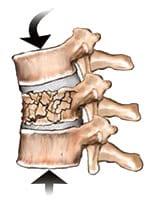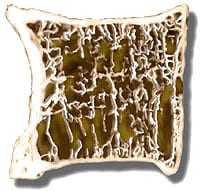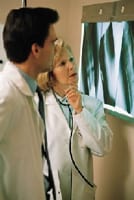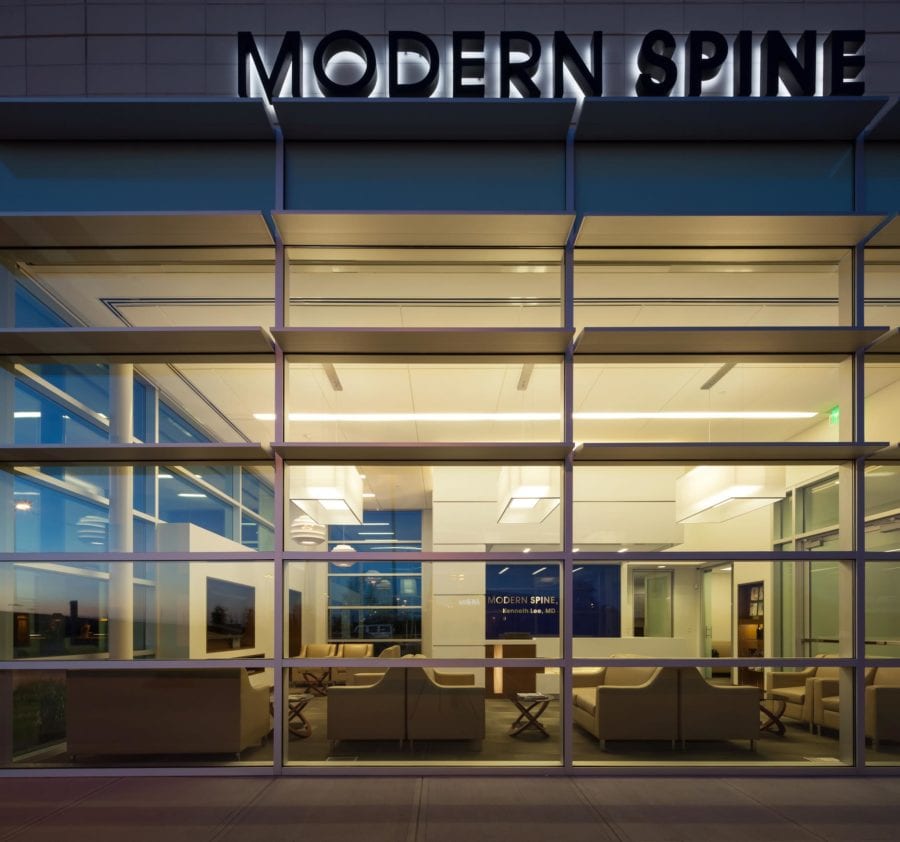Back pain is not just another inevitable aspect of growing older. It could be a sign of stress fractures within your spine called vertebral compression fractures.
What Is A Vertebral Compression Fracture?
Spinal fractures occur when the normal vertebral body is “squashed”, or compressed in height. When the load on a vertebra exceeds its stability or inherent strength, the bone can collapse. Pain, limited mobility, height loss and spinal deformity are often the result. In severe cases, part of the vertebral body may protrude into the spinal canal and put pressure on the spinal cord and nerves. Organ function, including that of the bowel or bladder, also may be compromised.

Vertebral compression fractures can happen for a number of reasons: trauma from a fall or a car accident; bone thinning due to osteoporosis or even the spread of a tumor into the spine.
Knowing how to prevent, recognize and treat vertebral compression fractures is critical for maintaining good spinal health. Here is some information to help you learn more about this type of spinal injury.
What Causes Vertebral Compression Fractures?
Osteoporosis
There is no one single cause; however, the vast majority of vertebral compression fractures are the result of osteoporosis, a condition that causes bones to progressively become more thin and fragile. When bones are brittle, even everyday activities and minor traumas, such as lifting a laundry basket, missing a step, or even coughing or sneezing, can cause these tiny fractures.

Osteoporosis-related compression fractures can occur anywhere in the spine, but are most often found in the lower vertebrae of the upper back. The vertebral bone tends to collapse toward the front of the spine, creating wedge-shaped vertebrae that cause the spine to curve forward (kyphosis), eventually leading to the “dowager’s hump” frequently associated with the advanced stage of the disease. Learn more about osteoporosis.
Tumors
Tumors growing in or near the spine are another cause of compression fractures. Doctors frequently monitor those diagnosed with certain types of cancer, including multiple myeloma or lymphoma, for spinal breakage. Tumors also may spread to the spine as a result of cancer in other organs and areas of the body, such as the breasts, lungs and intestines.
Trauma
People with strong, healthy bones also can sustain compression fractures from a hard fall or blow to the back or torso. Vertebrae can withstand a good deal of shock; however, if the force on the spine is too great, they can break.
What Are The Symptoms Of Vertebral Compression Fracture?
The primary physical symptoms of vertebral fracture include one or more of the following
- Sudden onset of back pain
- Increase in pain when standing or walking
- Variable pain relief when lying down
- Limited spinal mobility
- Weakness or numbness in the affected areas
- Height loss
- Deformity and disability
- Shortness of breath

These additional symptoms signal the possibility of multiple vertebral fractures
- Hunched back (“dowager’s hump”)
- Bulging abdomen
- Gastrointestinal problems – crowding of the internal organs can be a serious side effect of multiple compression fractures
- Shortness of breath – it’s possible for the torso to become so compressed that it’s difficult to breathe
- Hip pain (hip fracture)
How Are Vertebral Compression Fractures Diagnosed?
If you think you may have a compression fracture, see a doctor. (To find one near you, visit our Physician Locator.) Here are some questions your doctor may ask
- How long have you been in pain? Was the onset sudden or gradual?
- Where is the pain located? What is the intensity?
- Does the pain radiate to other parts of the body?
- In what positions is the pain better or worse?
- Is the pain getting worse or better over time?
Your doctor also may recommend one or more of the following diagnostic tests
- A spinal X-ray to determine the presence of a fracture
- An MRI to check for the age of the fracture and other abnormalities in the soft tissues, including nerves and ligaments
- A nuclear bone scan, another test that can determine the presence and/or age of a fracture
- DEXA scan
How Are Vertebral Compression Fractures Treated?
Treatment of compression fractures includes measures to alleviate the pain, stabilize and repair the fracture, and diagnose the underlying cause of the breakage.
Non-Surgical Measures
Non-surgical treatment options your doctor may recommend include
- Medications to relieve bone, muscle and nerve pain
- A reduction in activity or bed rest
- A spinal brace to limit motion
- Medication to stabilize or improve bone density
- Physical therapy
- Epidural spinal injection
- External soft bracing
Surgical Options
If compression fractures fail to heal or if pain persists despite non-surgical measures, your doctor may recommend surgery as the next step toward relief. Surgical procedures for treating vertebral compression fractures are usually minimally invasive.
How Can I Prevent Vertebral Compression Fractures?
The best way to avoid vertebral compression fractures is to begin taking preventive measures toward building a strong back and spine early in life. But, even if you didn’t, it’s never too late to start! Here are a few tips
Exercise – Exercise, especially strength/resistance training and/or lifting weights regularly, can help build strong bones. Engaging in some form of cardiovascular exercise and strength training at least three times a week can help combat bone loss, and the earlier you start exercising and strength training the better. Strong muscles also help you maintain balance to avoid falls and other accidents.
For back-strengthening programs at the beginner, intermediate and advanced levels, check out these exercises for the back and spine.
Eat Right – Eat a nutrient-rich, balanced diet, with sufficient intake of calcium, Vitamin D and phosphorus. Avoid smoking and excessive alcohol use; smoking contributes to bone density loss and too much alcohol inhibits bone formation. If possible, maintain a healthy weight – additional pounds place excess strain on the back.
Stay Hydrated – Drink between six and eight cups or water a day to keep the body well hydrated. Water helps reduce stiffness and contributes to overall spine health. Learn how to maintain bone density for a healthy spine.
Practice Good Posture – Maintaining a “neutral spine” is the foundation of good posture. In a neutral spine, the natural curves of the spine (the concave, or lordotic, curves, and the convex, or kyphotic, curves) are in proper balance. The spine is neither rounded forward nor arched back too much.
Proper posture keeps your bones properly aligned and alleviates excess stress on your musculoskeletal systems, allowing your muscles, joints, and ligaments to work as intended.


